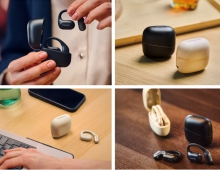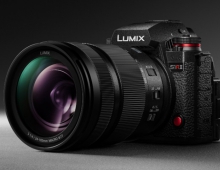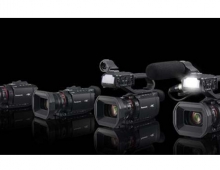
Ten O'Clock Tech: Record TV to DVD
When it comes to recording TV programs, videotape certainly has its drawbacks. Tapes degrade and basically self-destruct after a few years. That's why DVD movies are becoming so popular...
Now Panasonic is promoting the DVD as the new medium of choice for recording TV programs. Its latest DVD recorder, the DMR-E20, does exactly that--but at a price that's nowhere near competitive with a standard VCR. The recorder uses either DVD-RAM or DVD-R discs to record and store information from either your TV or stereo system.
As a video recorder, it has some interesting advantages over videotape. As long as there's a disc loaded into the recorder, you can start recording without having to worry about queuing up to a blank space. The recorder automatically stores the information wherever it finds blank space on the disc. It also has a feature called "Time Slip" that lets you watch the beginning of a program while it's still recording that very program. So if you're late in catching a baseball game, for instance, you could watch the start of the game that's already on the disc even while it's still recording the later innings.
It also lets you navigate through the contents of the disc from a menu that lists the recording date, time, channel and title that you've entered. You can also use the playlist function to do nonlinear video editing, like rearranging scenes, skipping parts you don't like or creating a custom list of your favorite scenes.
And if you use one of the new double-sided 9.4-gigabyte DVD-RAM discs, you can record up to 12 hours on a single disc. You can also play them back on any DVD-RAM compatible player, including players on PCs. The unit can also be used to transfer your favorite movies on videotape to a DVD, including your personal home movies or prerecorded commercial tapes. The company says it will even improve the video and audio quality from the original.
The player will hit stories in October, and will sell for about $1,500. That's a real improvement over Panasonic's first DVD recorder, which sold for about $4,000. But we have a long way to go before the DVD becomes price-competitive with videotapes.
As a video recorder, it has some interesting advantages over videotape. As long as there's a disc loaded into the recorder, you can start recording without having to worry about queuing up to a blank space. The recorder automatically stores the information wherever it finds blank space on the disc. It also has a feature called "Time Slip" that lets you watch the beginning of a program while it's still recording that very program. So if you're late in catching a baseball game, for instance, you could watch the start of the game that's already on the disc even while it's still recording the later innings.
It also lets you navigate through the contents of the disc from a menu that lists the recording date, time, channel and title that you've entered. You can also use the playlist function to do nonlinear video editing, like rearranging scenes, skipping parts you don't like or creating a custom list of your favorite scenes.
And if you use one of the new double-sided 9.4-gigabyte DVD-RAM discs, you can record up to 12 hours on a single disc. You can also play them back on any DVD-RAM compatible player, including players on PCs. The unit can also be used to transfer your favorite movies on videotape to a DVD, including your personal home movies or prerecorded commercial tapes. The company says it will even improve the video and audio quality from the original.
The player will hit stories in October, and will sell for about $1,500. That's a real improvement over Panasonic's first DVD recorder, which sold for about $4,000. But we have a long way to go before the DVD becomes price-competitive with videotapes.





















